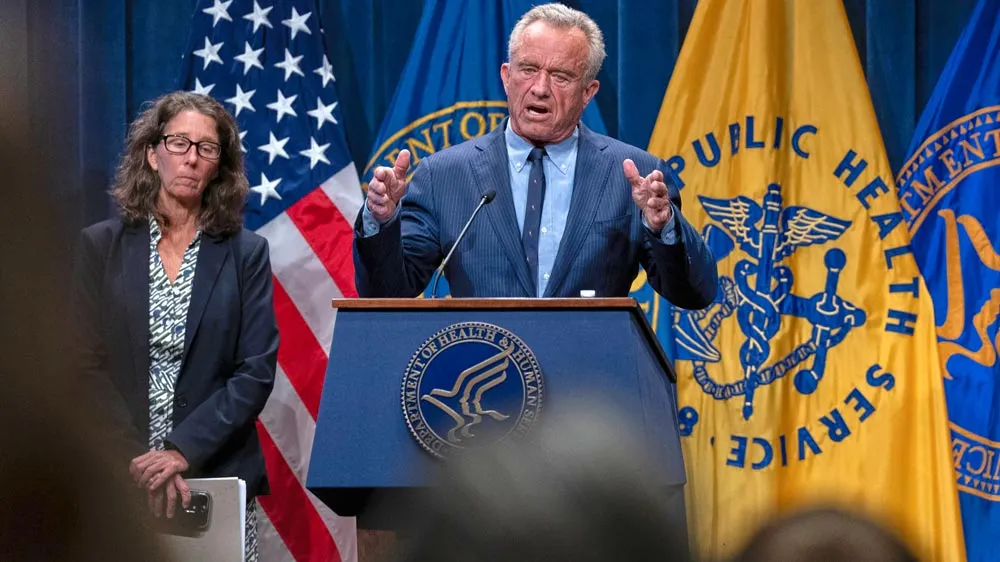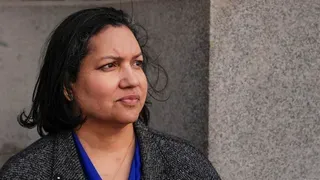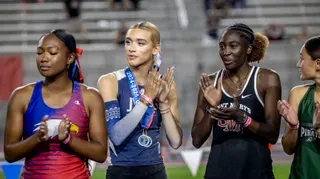June 23, 2012
Creator of Rainbow Flag Shares His Memories of the Movement
Roger Brigham READ TIME: 5 MIN.
On June 19, artist Gilbert Baker, who created the rainbow flag in 1978, shared his memories of that period and the flag's creation in a discussion at the GLBT Historical Society in San Francisco with longtime activist and friend, Cleve Jones.
The rainbow flag is so iconic, so ubiquitous, so universally recognized, that there is a habitual tendency to think that it has always flown to represent queer Pride. Yet it is not so: it was created and consciously adopted in the streets of San Francisco, when activists spoke of gay liberation rather than LGBT acceptance in the after-fires of the political fires of the late 1970s. And no, it wasn't created because we're all friends of Dorothy.
"1977 -- that was a pivotal year," Baker said. "That was the year of Anita Bryant. That was he year Harvey (Milk) was elected. That was the year we became galvanized."
It was also the year after the American Bicentennial Celebration, a period that Baker said made him more flag conscious as cranked out hundreds of banners and signs for the endless parades that activists were busily organizing.
"I thought, 'You know, we ought to have a flag,'" Baker said. "A flag is something you can't disarm. What makes a flag a flag is that people own it. It connects to their souls. It belongs to them."
Baker said he did not want to work with the symbols of oppression that had been adopted in the early victim politics.
"The Lambda was a little obscure," he said, "and the triangles were given to us by the Nazis."
He began researching rainbows and their uses in the Bible, in Native cultures and in the psychedelic hippy peace and freedom culture of the Sixties.
"It represents all the colors, all the genders, all the humanity," Baker said. "I wanted to expand on the use of visual images that would not depend on language."
Baker said the first two flags were made using all-natural materials and dyes in the fashion of the day. But the colors ran when they got wet. In addition, the flag started off with eight colors, not the six it has now, and each color stood for something different: pink (sex), red (life), orange (healing), yellow (sun), green (nature), turquoise (magic), blue (serenity) and lavender (spirit).
"Eight is a very magical number," said Baker. "It's symmetrical, and allowed me to split them into hot and cold colors. It gave me a way to incorporate pink. Of course, it was a fuschia hot pink. And it allowed me to bring in turquoise, connecting to Native island cultures."
But, in the long run, the eight color flag was too complicated and costly to reproduce in the pre-digital age of four-color printing. So he dropped pink and turquoise.
"I felt strange because I was giving up sex and magic," Baker said with a laugh.
Jones said there was a lot of community conversation at the time about the need for a unifying symbol.
"When that went up the flag pole, all conversation on it stopped," Jones said. "Everybody just embraced it."
It seemed, Baker and Jones said, that just about everyone wanted the gay flags except the flag industry: world of flag-makers and vexilographers.
"It took about 10 years," Baker said, recounting how he cut his hair and dressed in business attire in order to try to fit in at the flag industry conventions. "They pretty much decide on what a flag is. They would not even entertain a motion that there even was such a thing as a gay flag. A lot of good old boy flag companies down in Texas didn't want to know anything about a gay flag."
But when one took a chance and made 5,000 little flags for Baker, they sold out in two hours. Game over, battle won.
Now they are everywhere, and the rainbow is incorporated in knick-knacks and collectibles. Jones teased Baker about not having patented the symbol.
"How do you feel when you see all this rainbow crap and you don't stand to make a penny off it?" Jones asked.
"It's not about money," Baker teased back. "It's about power."
There have been some iconic world record moments for the flag since then, such as the Stonewall 25 flag in New York City in 1994, and the sea-to-sea rainbow flag in Key West in 2003 on the 25th anniversary of the flag.
And there have been the grim reminders of why the flag was needed, as when a parade of the flag in a celebration in Stockholm drew 300,000 spectators, and then was disrupted when gangs of young neo-Nazis grabbed and brutally beat some of the spectators.
"It blew my mind," Baker said. "There is this resistance that comes to us in the form of violence. We're lucky to be in America. I think about those gay people in China who can't come out -- making those rainbow tchotchkes and they can never come out. Or Uganda: there wasn't any 'Will and Grace' in Uganda. Our liberation is an ongoing struggle. It was before us and it will be in the generations after us. It's more than the colors we can see: It's the colors that we can't see, the thing that go past our own lives."
For information about ongoing exhibits and presentations at the GLBT Historical Society, 4127 18th Street, a half a block off Castro Street, visit www.glbthistory.org.
Roger Brigham, a freelance writer and communications consultant, is the San Francisco Editor of EDGE. He lives in Oakland with his husband, Eduardo.






